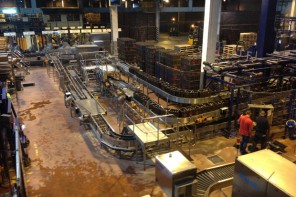Written by: Staff Reporter
There is no better way to celebrate the arrival of spring than by planting a naturally beautiful carbon dioxide absorbing machine – an indigenous tree – particularly as September is also Arbor month.
Planting trees, the experts tell us, assists in restoring ecosystems, improving the environment and creating a healthier planet, and of course, some say, will ease the mind and soul.
This month, social enterprise Food & Trees for Africa celebrates 20 years of greening South Africa, as well as having distributed an impressive 3,4 million trees to disadvantaged communities across the country.
During Arbour Month 2010, the organisation will facilitate the distribution and planting of over 10 000 trees through more than 40 awareness and education events at schools, creches, hospitals and communities across South Africa, with a host of funders.
The long list of contributions to the organisation come from individuals, to members such as the South African Post Office, to government departments such as the Department of Public Enterprises, to banking giants such as Absa, and large companies such as AngloGold Ashanti.
Trees & Food for Africa says that through the simple message of planting and conserving trees to care for the planet and the people, and address climate change, the organisation has contributed to the growth in green interest from government, companies, schools and communities.
Many South African businesses are beginning to embrace the benefits of planting and conserving trees, offsetting carbon emissions and greening, while at the same time improving overall quality of life and ultimately changing the environment.
“In addition to sinking the carbon dioxide, that is one of the major greenhouse gases, the trees planted contribute to improved water, energy, soil and noise management, food security (fruit and nut trees), enrich lives and cultivate healthier and more sustainable communities,” highlights the organisation.
More than a million
South Africa’s Department of Agriculture Forestry and Fisheries, which is the custodian of forestry in the country, launched the Million Trees Programme in Ga-Rankuwa, in 2007.
The goal was to ensure the planting of at least a million trees a year in line with the United Nations Plant a Billion Trees for the Planet campaign.
In his speech on September 1 this year, the Deputy Minister of Agriculture Forestry and Fisheries Dr Pieter Mulder, proudly stated that that over the past two years South Africa has been able to exceed the set target for the Million Trees Programme.
“In 2007 an estimated 1,7 million trees were planted and last year 1,8 million trees were planted through this programme. This could not be possible without the involvement of Municipalities, Provincial government departments, Non-Government Organisations, Community Based Organisations and the Corporate sector,” explained Mulder.
In particular he thanked petroleum company Total South Africa, which has been the corporate sponsor for Arbor Week since 2007.
The Department of Agriculture Forestry and Fisheries quoted United Nations Environmental Programmes (UNEP) Executive Director Achim Steiner, as having said that “forests are natural and economically important ‘sinks’, sequestrating carbon from the atmosphere and locking it away in trunks and branches. Globally, forest cover is at least one-third less than what it once was. It is time to reverse the trends, it is time to act.”
Putting this into perspective, the department explained that one hectare of forest growing at the rate of producing 10 cubic metres (m3) of wood a year, would remove carbon dioxide to the equivalent of 14 million cubic metres (m3) of air.
However, trees do not all grow equally fast, and all forests are not equally productive as carbon sinks. Trees in urban environments and commercial forestry plantations are generally quite fast growing and are therefore active carbon sinks.
It was Minister of Agriculture forestry and Fisheries Tina Joemat-Pettersson who drew important attention to the impact of forest fires on these very important carbon sinks recently.
South Africa, and other countries worldwide, have seen the destruction possible through recent devastating fires, and have become increasingly aware of the impact of fires on precious natural resources, and on the commercial forestry sector.
“The Western Cape again experienced the worst fire season since 2000, It is estimated that the damage to the agricultural industry estimated to be at between R150million and R200million; damage include vineyards, citrus orchards, plantations and pastures,” said the Minister.
She also noted that the fires that impacted on the wine estates in the Helderberg area started on the 4th of February and lasted until mid March, the loss was estimated at R40,5million, and the losses also included a million pine trees on Lourensford Estate.
While these losses are discouraging and can never be simply restored, individuals should continue to contribute as much as they can in their own capacity to get stuck in the dirt to help with planting more trees.
While Johannesburg is well-known as the world’s largest man-made forest, this luxury does not extend beyond the city’s more affluent suburbs, and there is a distinct lack of foliage as one moves out of the central areas towards the townships.
These are the areas where much of the focus on tree planting is happening now.
On September 14, Pick n Pay, together with Food & Trees for Africa’s planted 66 trees at K206 Park in Alexandra to celebrate Arbor Month.
Primedia broadcasting’s Prime Talent division also spearheaded a project to plant 54 indigenous trees. The project also ties in with the Lead SA campaign, and over the month of September every department in the company gets physically involved to plant a tree or shrub.
Absa, Engen and the Woolworths Trust, also fund a programme called EduPlant, which is co-ordinated by Food & Trees for Africa nationally. The project involves workshops to equip educators with skills to allow them to cultivate permaculture gardens in schools and in this way help address food shortages in their communities.
One does not need to look far to find initiatives of this sort taking place throughout the country, which also means that getting involved is probably easier than you think!
The liveeco team





